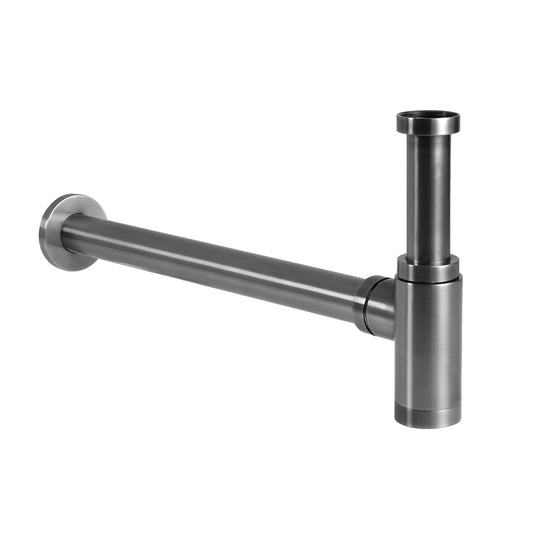How to Fit a Bathroom Basin Bottle Trap: Step-by-Step Guide
Table Of Contents:
-
Introduction
-
What is a Bathroom Basin Bottle Trap?
-
Types of Bathroom Basin Bottle Traps
-
Essential Components in the Box
-
Fitting the Waste to the Bottle Trap
-
Fitting the Waste Pipe to the Main Drains
-
Connecting to the Mains Drain System
-
Installation and Maintenance Tips
-
Frequently Asked Questions (FAQs)
-
Conclusion
Introduction
In this comprehensive guide, we will walk you through the process of fitting a bathroom basin bottle trap. A bottle trap is an essential component of your basin plumbing that ensures hygiene and prevents harmful gases from entering your bathroom. We'll cover everything you need to know to successfully install a basin bottle trap in your bathroom.
What is a Bathroom Basin Bottle Trap?
A bathroom basin bottle trap is a vital part of your basin's plumbing system. It is connected to the waste plug under your sink and plays a crucial role in maintaining hygiene and safety. The primary function of a bottle trap is to prevent potentially harmful gases from rising up through the drainage system and entering your bathroom through the waste outlet. Additionally, it features a removable filter that helps capture items that accidentally find their way down the drain.
Types of Bathroom Basin Bottle Traps
Before we delve into the installation process, let's explore the types of bathroom basin bottle traps available. Understanding the different types will help you choose the one that best suits your needs.
Essential Components in the Box
When you purchase a bathroom basin bottle trap, you can expect to find three essential items inside the box:
- The Main Body of the Bottle Trap
- The Outlet Pipe
- The Outlet Pipe Wall Cover
These components are crucial for the successful installation of your bottle trap.
Fitting the Waste to the Bottle Trap
Proper installation begins with fitting the waste to the bottle trap. This step ensures a secure seal and prevents any leakage. Follow these steps:
- Place the 'top hat' washer inside the threaded top flange. This washer plays a critical role in creating a secure seal when the waste plug is screwed to the bottle trap.
Fitting the Waste Pipe to the Main Drains
With the waste securely attached to the bottle trap, it's time to connect the waste pipe to the main drains. This step ensures that wastewater flows smoothly. Here's how to do it:
- Insert the tapered seal, tapered end first, into the body of the bottle trap. This seal is essential for creating a watertight connection.

Connecting to the Mains Drain System
The final connection involves linking your bottle trap to the mains drain system. While there is no fixing method for the pipe cover as it should sit flush to the wall, you may choose to use silicone sealant for added security.
Installation and Maintenance Tips
To guarantee the longevity and effectiveness of your bathroom basin bottle trap, follow these installation and maintenance tips:
Be cautious when installing the basin and its accessories to avoid damaging the finish or fittings.
Clean the bathroom furniture regularly using a clean soft damp cloth. Avoid abrasive cleaners or detergents as they may cause deterioration.
Frequently Asked Questions (FAQs)
Q1: What is the purpose of a bathroom basin bottle trap?
A1: A bathroom basin bottle trap prevents harmful gases from entering your bathroom and maintains hygiene by capturing items that shouldn't go down the drain.
Q2: Are sink traps and bottle traps the same thing?
A2: Yes, sink traps and bottle traps are different names for the same plumbing component used to prevent gas infiltration and ensure hygiene.
Q3: Can I use silicone sealant for added security during installation?
A3: Yes, silicone sealant can be used to secure connections, but it may not always be necessary.
Conclusion
In conclusion, fitting a bathroom basin bottle trap is a crucial step in maintaining the hygiene and safety of your bathroom. By following the steps outlined in this guide and adhering to proper maintenance practices, you can ensure the effectiveness and longevity of your bottle trap installation. Say goodbye to harmful gases and unwanted items in your drain, and enjoy a clean and hygienic bathroom environment.












































